HyperVisors and Virtual Machines
1. Virtual Machine Monitor / Manager (Hypervisor)
Definition: A layer of software/firmware managing multiple VMs on a single physical host.
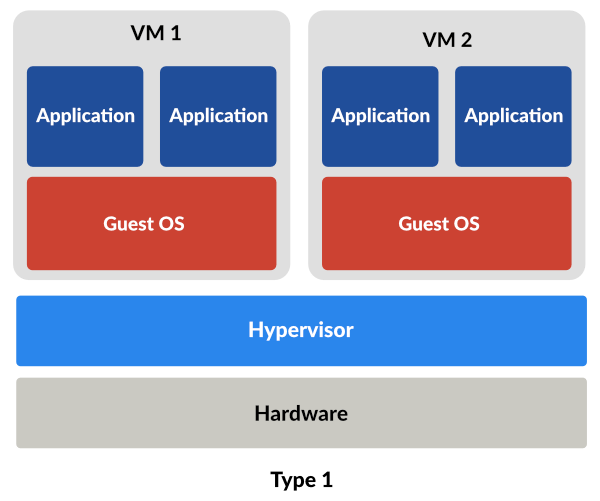
-
Types of Hypervisors:
- Type 1 (Bare Metal): Runs directly on hardware. Examples: VMware ESXi, Microsoft Hyper-V Server, Xen.
- Type 2 (Hosted): Runs on an existing OS. Examples: VMware Workstation, Oracle VirtualBox, Parallels Desktop.
-
Key Functions:
- Virtualization
- Resource Allocation
- Isolation
- Hardware Abstraction
-
Advantages:
- Server Consolidation
- Isolation
- Ease of Management
-
Use Cases:
- Data Centres
- Development and Testing
- Desktop Virtualization
-
Challenges:
- Performance Overhead
- Security Concerns
- Compatibility
-
Key Providers: VMware, Microsoft, Citrix, Oracle
2. Implementation Types
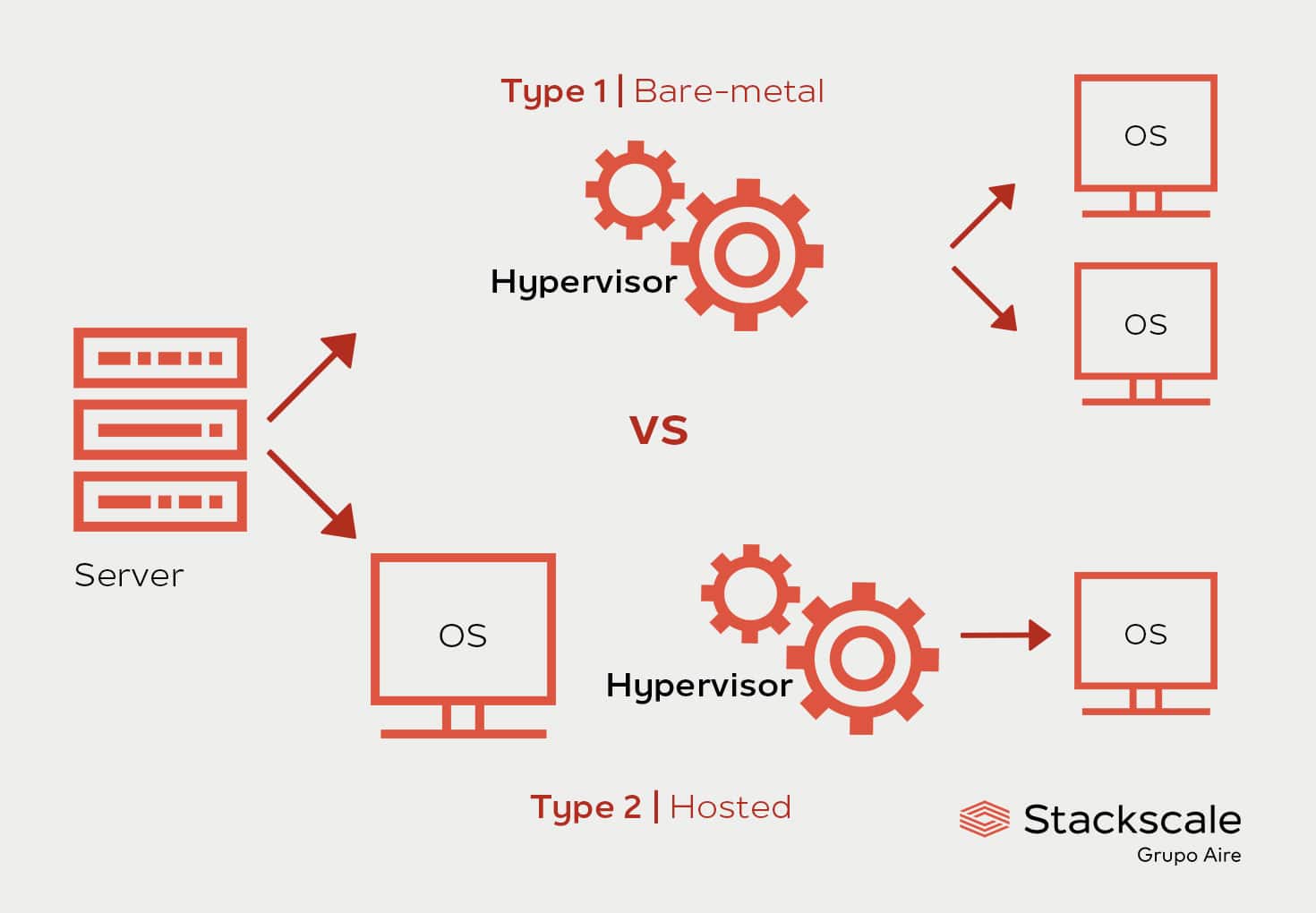
-
Type 1 Hypervisor:
- Direct control over hardware.
- Efficient performance.
- Used in enterprise environments.
-
Type 2 Hypervisor:
- Runs on top of a host OS.
- Easier setup.
- Used for desktops/laptops.
3. Para-Virtualization
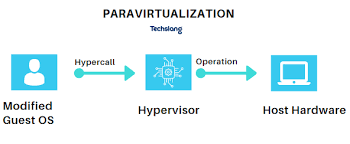
- Implementation: Modifies the guest OS for efficient communication with the host.
- Example: Xen (uses Xen-aware Linux kernel).
- Characteristics: Improved performance but requires guest OS modifications.
4. Programming Environment Virtualization
- Approaches:
- Virtual Machines: Full-fledged emulation of a computer system. Examples: VMware, VirtualBox, Hyper-V.
- Cloud-based Environments: IDEs or services in the cloud. Examples: AWS Cloud9, GitHub Codespaces.
- Advantages: Isolation, compatibility, accessibility, collaboration.
5. Emulation
- Definition: One system behaves like another.
- Examples: Dolphin, Parallels, Wine, Bluestacks, Xcode.
- Advantages: Cross-platform compatibility, low cost, space efficiency.
- Disadvantages: Slower performance, security risks.
6. Microkernels and Exokernels
-
Microkernels:
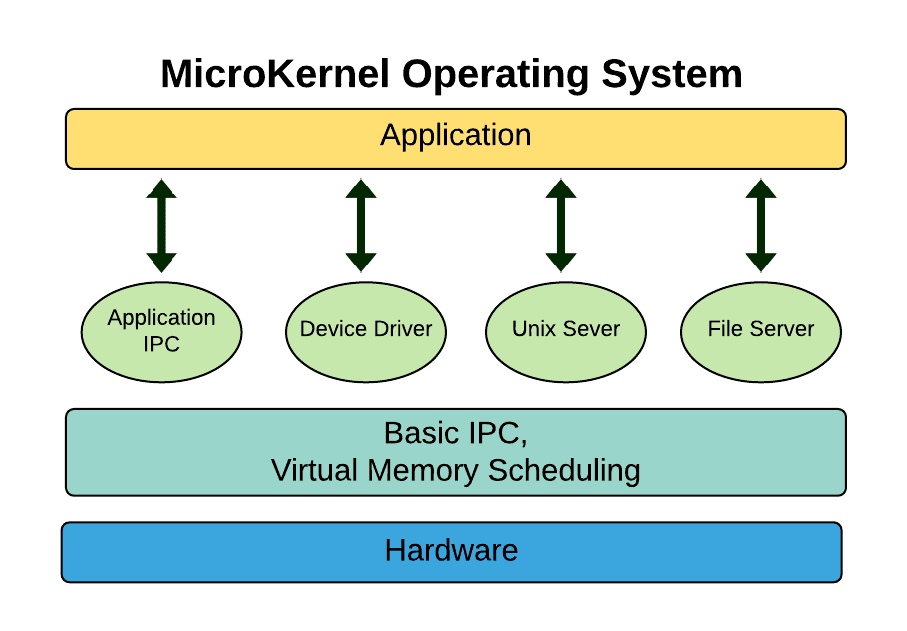
- Principle: Minimize kernel functionality, delegate services to user-space.
- Structure: Core services in the microkernel, additional services in user-space.
- Advantages: Modularity, reliability.
- Disadvantages: Performance overhead, complexity.
- Examples: Mach, L4.
-
Exokernels:
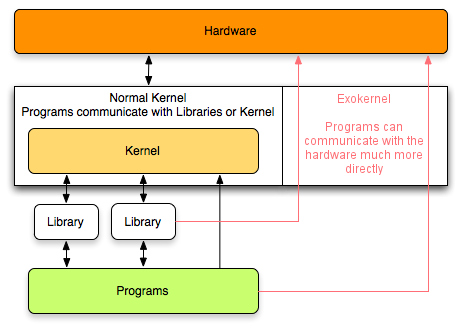
- Principle: Expose hardware resources directly to applications.
- Structure: Minimal abstractions, direct hardware management by applications.
- Advantages: Performance, flexibility.
- Disadvantages: Security concerns, complexity for developers.
- Examples: Exokernel, Nemesis.
-
Comparison:
- Abstraction Level: Microkernels (higher-level), Exokernels (lower-level).
- Performance: Microkernels (potential overhead), Exokernels (maximum performance).
- Flexibility: Microkernels (modularity), Exokernels (direct control).
- Security: Microkernels (isolation), Exokernels (application-level responsibility).
Summary
Microkernels focus on modularity and reliability, with a small core kernel, while exokernels prioritize performance and flexibility by allowing applications direct hardware control. The choice depends on design goals and trade-offs. Hypervisors, essential for virtualization, come in two types: Type 1 for direct hardware access and Type 2 for ease of use on existing OS. Emulation and programming environment virtualization facilitate cross-platform compatibility and consistent development setups.